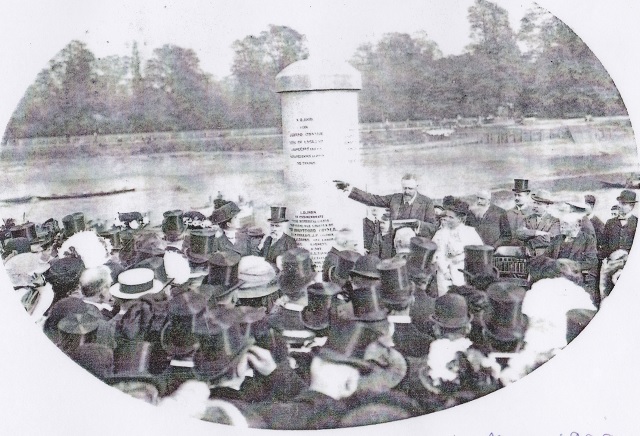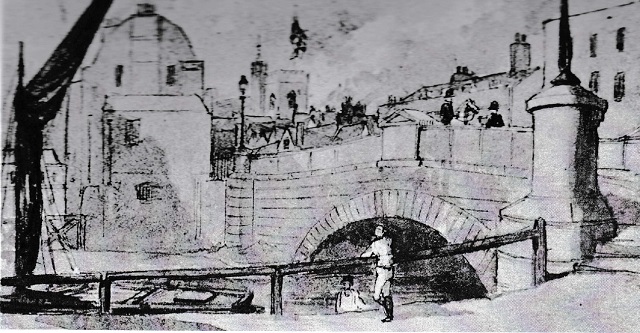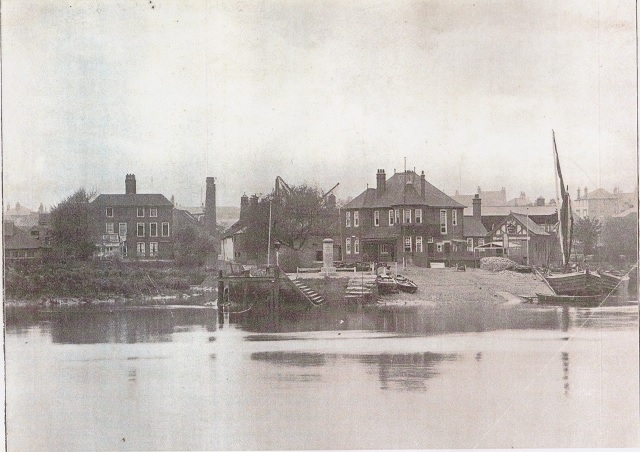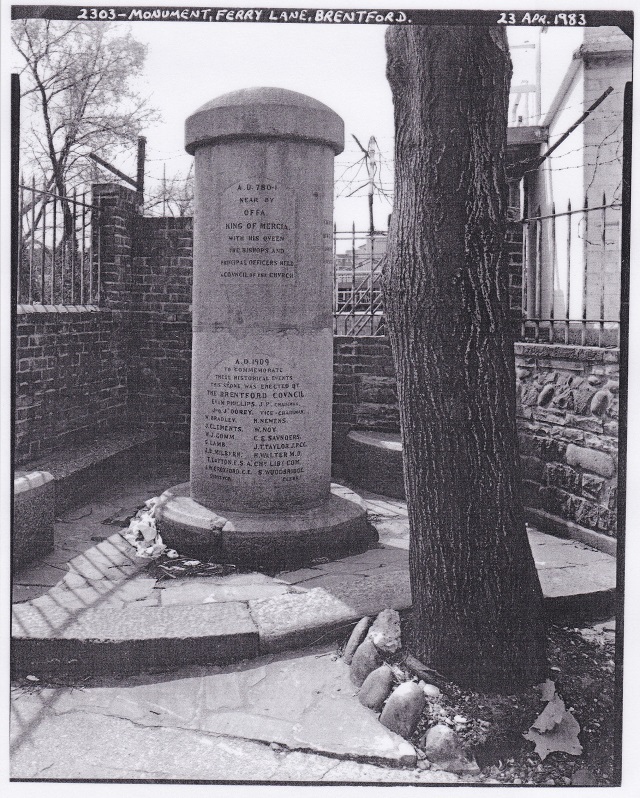Brentford Monument Being Restored
A brief history of the monument's various locations

|
Near the bus stop at Morrisons on the corner of the High Street and Alexandra Road is a column of Peterhead granite. It was originally part of Brentford Bridge over the Grand Union Canal and had a lamp on the top.
This week the Monument has been covered by hoardings as thanks to the efforts of Councillor Lambert and officers from Hounslow it is to be restored over the next few weeks funded out of S106.
In 1901 tram lines were being laid through the High Street and the bridge needed to be widened so the upstream pillars were removed. A few years later Montagu Sharpe (later Sir Montagu), who was a local antiquarian, magistrate and Chairman of the Middlesex County Council came up with the idea of using the lamp pillars to commemorate some events in Brentford history.
As a respected authority on the early history of Middlesex, particularly the Roman period his researches had led him to believe that Brentford was where Julius Caesar had forded the Thames on his exploration of Britain in 54BC though nowadays suggestions of other places are thought of as possibilities. The river side at the bottom of Ferry Lane was chosen to be the site for a monument as this was believed to be the place of the prehistoric ford and on May 12th 1909 Brentford Monument was unveiled by His Grace the Duke of Northumberland.

Watercolour of Brentford Bridge, showing two of the granite cylinders later used for the Monument (taken from the Journal mentioned below)
Montagu Sharpe told the 500 visitors to the unveiling of the four events that he’d researched and recorded. As well as Caesar fighting his way across the ford panels told of the Church meeting held by Offa, King of Mercia in AD 780/1, Edmund Ironside fighting Cnut or Canute, the Dane here in 1016 and the Battle of Brentford during the English Civil War in 1642. This last is commemorated in more detail on a panel outside the County Court.

Brentford Ferry with the Bunch of Grapes Public House, later the Ferry Inn
During the 1930s Ferry Wharf was used for storing coal by the Gas Light and Coke Company whose works covered the area of Watermans Park, the Arts Centre and the offices next to Smith Hill. This led to the monument being damaged by sacks and buried under piles of coal. Over a number of years there were suggestions for several moves. It may have finished up in The Butts or on a piece of public open land by the ferry or by the Fire Station on the High Street. Eventually in 1953 Varley Pumps offered an alcove in their boundary wall in Ferry Lane which is where it stayed while businesses closed all around. At this move it seems to have lost its base and the top and bottom panels became misaligned.

Ferry Lane, 1983
In the 1980s Ferry Lane was awaiting redevelopment and disappearing under vegetation, litter and graffiti until in 1982 it was moved to its present site in the High Street but again lost part of its base. That time it was it was unveiled by Councillor Mike Hunt, Chair of Leisure Services, and Councillor Mike Carman on November 12th 1982, 350 years to the day after the Royalist forces of King Charles I trying to take London drove the Parliamentary army out and sacked the town.
This event was attended by members of the Sealed Knot Society who at the time were the group commemorating events from the Civil War but there don’t seem to be any pictures of this.
If any readers have any pictures will you please send copies to the editor.
A more comprehensive history of the Monument by Diana Willment can be read in Brentford & Chiswick Local History Society Journal number 18 published in 2009 available from the Society website www.brentfordandchiswicklhs.org.uk or Chiswick and Brentford libraries.
Janet McNamara
June 15, 2017